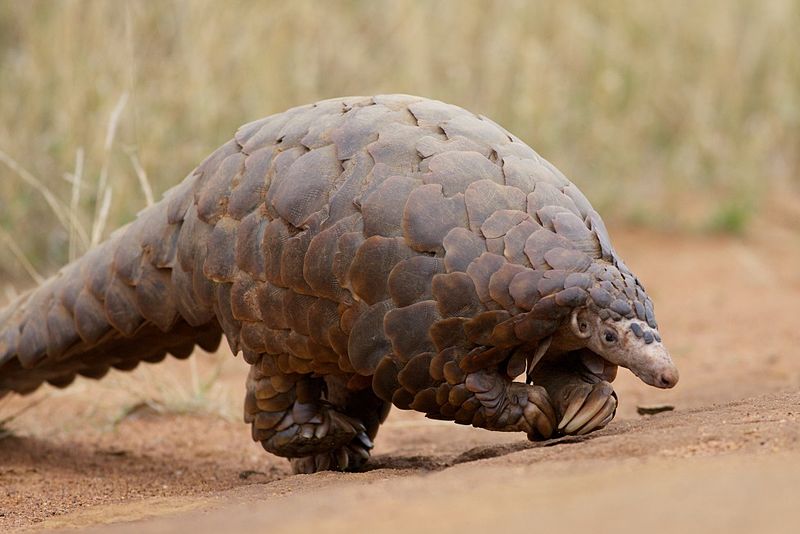Giant Ground Pangolin
Species Data
Class: Mammalia
Order: Pholidota
Family: Manidae
Scientific Name: Smutsia gigantea
IUCN Red List status: Endangered
Description
The Giant Ground Pangolin is the largest of the eight pangolin species, stretching up to 1.8 metres long and weighing up to 33kg. Covered in protective scales, they can roll into a defensive ball when danger is near to protect every part of exposed body. They also have long front claws for digging and ripping into ant colonies, where they use their long tongue to feast on ants and termites.
Behaviour
As their name suggests, Giant Ground Pangolin are a terrestrial species; they tend to spend the daytime resting under piles of plant debris, in thickets, under fallen tree roots, or in burrows. Pangolins do not have many defences, but if a predator gets too close, they will roll into a tight ball to protect themselves – explaining the origins of their name (‘penggulung’ is Malay for ‘roller’). Their reproductive biology is not well known; breeding may be seasonal and females usually give birth to a single young, possibly annually, but perhaps every second year. A baby pangolin will ride on its mother’s back while nursing and eating ants until ready to become independent.
Image credit: © David Brossard creativecommons.org/licenses/by-sa/2.0/


Habitat
The solitary, nocturnal and elusive nature of the Giant Ground Pangolin makes it difficult to carry out surveys and as a result there is little information on population abundance or densities. These Pangolin are found across West and Central Africa in a broad range of habitats – primary and secondary rainforest forest formations, gallery forests, swamp forests, forest-savannah mosaic habitats and wooded savannah. They prefer to reside near water sources and spend their time on the ground – unlike the White-bellied Pangolin and the Black-bellied Pangolin who like to move through the trees.
Threats and Conservation
The biggest threat to the Giant Ground Pangolin is humans. The Pangolin are thought to be one of the world’s most trafficked animals and the latest IUCN assessment classifies Giant Ground Pangolin as Endangered. Populations of Giant Ground Pangolin have declined based on a combination of forest loss (a severe threat), the intercontinental trafficking of their scales and increasing rates of exploitation for local use and consumption. Pangolin scales are highly valued in traditional Chinese medicine and it is estimated that between 2015 and 2019 the equivalent of more than 400,000 African pangolins – the Giant Ground Pangolin included – were trafficked either within Africa or bound for Asia.
